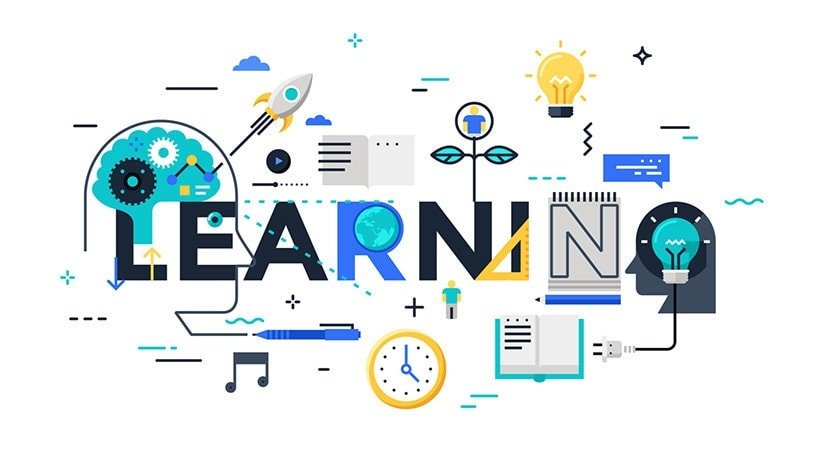In today’s fast-paced business environment, the ability to continuously learn and adapt is not just a competitive advantage—it’s a necessity. Creating a culture of learning at work is essential for fostering employee engagement, driving innovation, and ensuring the long-term success of the organization.
In this article, we will explore why building a learning culture in your organization is critical, outline key strategies for fostering this environment, provide practical steps for implementation, share real-world examples, address potential challenges, and discuss how to measure success.
Why Building a Culture of Learning Is Critical
Organizations that embrace a culture of learning empower their employees to grow, develop, and contribute in more meaningful ways. There are several reasons why investing in a learning culture is not only beneficial but essential for modern businesses:
Adaptation to Industry Changes
The speed of technological advancements and market shifts means that industries are constantly evolving. A learning culture in your organization ensures that employees are equipped to stay ahead of industry trends and adopt new tools and technologies as they emerge.
For example, in industries like healthcare or finance, where regulations frequently change, keeping employees up to date with the latest compliance requirements is crucial. Without continuous learning, organizations risk falling behind competitors or becoming obsolete in their sector.
Closing the Skills Gap and Future-Proofing the Workforce
Many industries are facing a widening skills gap, where the demand for certain skills outpaces the supply of qualified candidates. A culture of learning helps close this gap by continuously upskilling current employees, reducing the need to hire externally.
Moreover, future-proofing the workforce means preparing employees for roles that may not yet exist, such as those emerging from advancements in artificial intelligence, machine learning, or sustainability practices. By using employee training and fostering continuous learning, companies can better adapt to these future demands and remain competitive.
Meeting Employee Expectations
Employee expectations have shifted significantly in recent years. Today’s workforce, particularly millennials and Generation Z, prioritize personal and professional growth opportunities over traditional job perks. According to research by LinkedIn, 94% of employees would stay longer at a company if it invested in their career development.
Employees who feel that their employers are invested in their personal growth are more likely to be engaged, loyal, and productive. By cultivating a learning culture, organizations can meet these evolving employee expectations, resulting in higher retention and job satisfaction.
Organizational Resilience
In times of crisis, such as economic downturns, pandemics, or industry disruptions, organizations with a strong learning culture tend to be more resilient. This resilience is built on the foundation of continuous improvement, adaptability, and innovation.
When employees are actively encouraged to keep learning, they are better equipped to pivot and find new solutions in response to challenges. During the COVID-19 pandemic, companies that invested in digital learning and remote work skills were able to adapt much faster than those that did not, enabling them to maintain operations and even grow in some cases.
Key Strategies for Building a Learning Culture

Fostering a true learning culture involves intentional strategies that prioritize development across all levels of the organization. These strategies not only promote learning but also make it a core part of the company’s DNA. Let’s dive deeper into the key strategies for building a robust culture of learning:
1. Make Learning a Core Value
For learning to become ingrained in the workplace, it must be elevated to a core organizational value. This means embedding learning into the company’s mission, vision business strategy, and daily operations. Leadership plays a pivotal role in this strategy, as they set the tone for the entire organization. When leaders openly embrace and prioritize their own learning, it sends a powerful message that continuous development is not only encouraged but expected.
In practice, companies can introduce learning as a key value during onboarding and communicate it throughout the employee lifecycle. For example, tech giants like Google and Amazon explicitly include innovation and continuous learning in their values, creating an environment where employees are constantly encouraged to acquire new skills.
2. Encourage Active Participation
It’s not enough to offer learning opportunities—employees need to take ownership of their own development. Organizations should provide diverse learning options, such as workshops, online courses, mentorship programs, and on-the-job training, allowing employees to choose what resonates with them. This flexibility empowers and enables employees to take control of their personal growth, leading to higher engagement and motivation.
Additionally, encourage knowledge sharing by creating opportunities for employees to teach one another. Peer learning can be as simple as holding “lunch-and-learn” sessions, where employees present new skills or lessons they’ve acquired. For example, LinkedIn Learning provides a range of self-paced courses that employees can access anytime, promoting a sense of autonomy in learning.
3. Provide Accessible Learning Opportunities
Accessibility is a key factor in promoting learning. Companies should leverage technology to provide mobile-friendly, on-demand learning platforms. With the rise of remote work, employees need to be able to access learning materials wherever they are, whether at home, during a commute, or on their lunch break.
Investing in a robust Learning Management System (LMS) allows organizations to offer a wide range of learning resources, including video tutorials, e-books, podcasts, and interactive quizzes. Companies like Coursera for Business and Udemy for Business have created platforms where employees can engage in learning anytime, making professional development more accessible than ever.
4. Personalize Learning Experiences
No two employees have the same career aspirations or learning preferences. To foster a meaningful learning culture, organizations should offer personalized learning plans tailored to individual goals and interests. Personalized learning allows employees to focus on areas that are most relevant to their roles, making the process more engaging and effective.
For example, if an employee aspires to move into a leadership role, their personalized learning plan might include courses on management, communication, and emotional intelligence. Engaging employees in discussions about their career goals can help tailor these development opportunities to their needs.
5. Foster a Growth Mindset
In developing a culture of learning, mistakes are seen as opportunities for growth. Organizations should cultivate an environment where experimentation and innovation are encouraged, and where failures are viewed as stepping stones toward success. A growth mindset—where employees believe they can develop their abilities through hard work and dedication—fosters resilience and creativity.
At companies like Pixar and IDEO, employees are encouraged to experiment with new ideas and take risks without fear of repercussions. These organizations have created environments where creativity thrives, leading to groundbreaking innovations. Leaders play a crucial role in fostering this mindset by celebrating efforts and progress, rather than just results.
6. Measure and Adapt Learning Initiatives
It’s important to regularly evaluate the effectiveness of learning programs. Gathering feedback from employees, analyzing performance data, and reviewing participation rates can help organizations understand what’s working and what needs improvement. Adapting learning strategies based on these insights ensures that development initiatives remain relevant and impactful.
For example, companies can track learning outcomes through assessments, certifications, or performance reviews. Google uses data-driven approaches to assess the effectiveness of its learning initiatives, ensuring that employees are equipped with the skills they need to excel.
7. Integrate Learning into Daily Routines
Making learning a natural part of everyday work life helps employees stay engaged with development. Organizations can incorporate microlearning—short, digestible lessons—into daily routines. Microlearning could be as simple as a 5-minute video or quiz that employees complete during a break.
Another effective strategy is to encourage employees to dedicate time each week to learning, such as “Learning Fridays,” where employees are free to focus on personal development. By integrating learning into the flow of work, companies can ensure that employees continue to grow without feeling overwhelmed by extra tasks.
8. Encourage Knowledge Sharing
Knowledge sharing is a critical component of a learning culture. Peer-to-peer learning creates a collaborative environment where employees can learn from one another’s experiences. Creating forums, such as internal knowledge-sharing platforms, team meetings, or mentorship programs, can help facilitate this exchange of ideas.
At PwC, for example, the Knowledge Sharing Network allows employees from different regions and departments to share best practices and learn from each other. This not only strengthens learning within the organization but also fosters a sense of community and collaboration among team members.
9. Leverage Technology for Learning
Technology plays a central role in facilitating continuous learning. A well-designed LMS allows employees to track their progress, access a variety of learning formats, and engage with content that’s relevant to their needs. The use of AI-powered tools can also help personalize learning paths for employees based on their roles, skills, and interests.
Organizations like IBM and Microsoft leverage data analytics to create personalized learning experiences for employees, making development more effective and targeted. By using technology to streamline the learning process, companies can foster a culture of learning that is both scalable and sustainable.
10. Recognize and Reward Learning
Recognition is a powerful motivator for agile learners. When employees see that their efforts to learn and grow are being acknowledged, they are more likely to stay engaged with development initiatives. Establishing recognition programs that publicly celebrate learning achievements—such as completing courses, acquiring new skills, or mentoring others—reinforces the importance of continuous learning.
Companies can implement rewards such as digital badges, certificates, or even financial incentives to encourage employees to prioritize learning. For example, Salesforce offers a Trailblazer badge system, where employees earn badges for completing various training sessions and modules, fostering healthy competition and recognition.
Practical Steps to Implement a Learning Culture

Building a learning culture requires a clear, actionable plan. Here are some practical steps that can help organizations effectively implement the strategies for organizational learning we outlined above:
1. Leadership Buy-In
Leadership plays a crucial role in the success of any cultural shift. To foster a learning culture, leaders must actively participate in learning initiatives and model the behavior they want to see in their employees. Leaders should also mentor employees, offering guidance and support as they develop their skills.
2. Create a Learning Roadmap
Develop a structured learning roadmap that aligns with your organization’s strategic goals. This formal learning roadmap should outline clear learning objectives for different teams and departments, ensuring that everyone understands how their development contributes to the company’s overall success.
3. Allocate a Learning Budget
Investing in learning and development is essential for long-term growth. Organizations should allocate a dedicated budget for training programs, learning platforms, and external certifications. This financial commitment signals to employees and future leaders that learning is a priority.
4. Foster Peer Learning
Encourage peer learning by setting up structured programs, such as mentorship or peer coaching. Employees can learn a lot from one another, and fostering a collaborative learning environment and leadership team not only builds knowledge but also strengthens relationships across the organization.
5. Link Learning to Career Progression
Employees are more likely to engage in learning when they see a clear connection between their development and career advancement. Organizations should tie learning opportunities to promotions, salary increases, or leadership roles, making development a key factor in career progression.
Challenges in Fostering a Learning Culture

While building a learning culture has numerous benefits, there are also challenges that organizations must address:
1. Time Constraints
Employees may feel that they don’t have enough time to engage in learning activities on top of their regular workload. Organizations can overcome this by incorporating microlearning and setting aside specific times for development, using traditional training, such as “learning hours” during the workweek.
2. Resistance to Change
Some employees and senior leaders may resist new learning initiatives, especially if they are accustomed to traditional ways of working. Clear communication and incentives can help ease this resistance. Leaders should also emphasize the long-term benefits of continuous development.
3. Budget Constraints
Learning initiatives can be costly, particularly for smaller organizations. To mitigate this, companies can take advantage of free or low-cost learning platforms, such as Coursera, Udemy, or Khan Academy. Peer learning and internal resources can also help reduce costs.
4. Lack of Immediate Results
Building a learning culture takes time, and organizations may not see immediate results. However, by setting realistic expectations and focusing on incremental progress, companies can maintain momentum and celebrate small wins along the way.
Metrics to Measure Success of a Learning Culture

To ensure that your learning culture is effective, it’s important to track specific metrics:
Employee Engagement and Participation
Measure participation rates in learning programs, course completion rates, and how frequently employees engage with learning content.
Skills Acquisition
Track the number of new skills acquired by employees and how these skills are applied to their roles. Certification completions and improved performance metrics can serve as indicators.
Internal Mobility
Monitor promotions, lateral moves, and internal hiring. These metrics indicate that employees are growing and advancing within the organization through learnin
Employee Retention
Compare retention rates before and after implementing their learning cultures and programs. A strong learning culture should correlate with lower turnover rates, as employees feel more invested in their personal and professional development.
Productivity and Innovation Metrics
Assess how workplace learning culture impacts productivity, task completion times, and the number of innovative ideas or solutions generated. Increased efficiency and creative problem-solving are common outcomes of a learning culture.
Employee Feedback
Regularly collect feedback through surveys or interviews to gauge employee satisfaction with learning initiatives and identify areas for improvement.
Conclusion

Building a culture of learning at work is an ongoing journey that requires commitment, leadership support, and careful implementation. By adopting the strategies outlined above, organizations can create an environment where continuous development is encouraged, valued, and rewarded.
The benefits—ranging from higher employee engagement and retention to increased innovation and productivity—are clear. In a world where change is constant, a culture of learning equips employees and organizations to thrive, adapt, and grow together.

A trailblazer in humanising leadership and building high-resilience teams. As a former United Nations Peacekeeper, he leverages his high-stakes experience to redefine leadership dynamics. With a career distinguished by numerous accolades, Joseph now helps organizations thrive through a human-centric approach, enhancing performance, productivity, and workplace culture.







